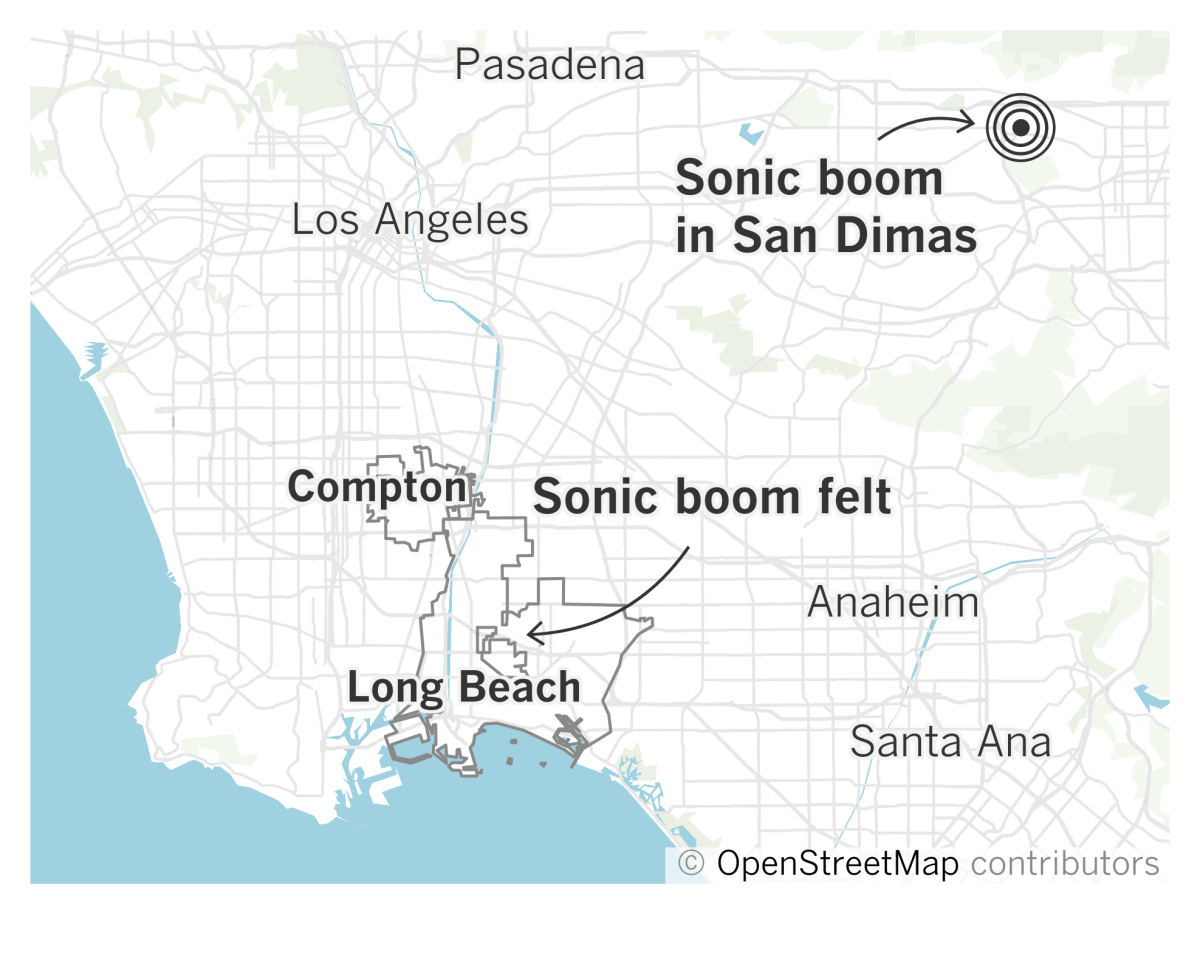A quake in SoCal? No — a sonic boom, seismologists say

- Share via
A day after a 6.0 magnitude earthquake jostled a wide swath of Northern California, residents in Southern California got a jolt Friday morning.
But what some thought was another quake turned out to be a sonic boom that was recorded about 9:20 a.m., according to the U.S. Geological Survey.
The blast of sound energy occurred about one mile south of San Dimas, the USGS reported. But the effects rippled out toward the coast, where several people reported feeling an earthquake-like rumble.
A sonic boom is a thunder-like noise that can be heard when an aircraft flies faster than the speed of sound, according to NASA.
“Many people report feeling it but the seismograms clearly show the earth was not moving, only the air,” earthquake expert Dr. Lucy Jones said in a tweet. “So it was a sonic boom.”
According to the USGS, one way seismologists can detect a sonic boom is when it is felt in a wide area, indicative of a large earthquake — except seismic instruments don’t register the disturbance as an earthquake.
Residents from Huntington Beach to Highland Park reported feeling their house shudder, the ground rumble and hearing a loud sound.
You can report whether or not you felt the sonic boom to the U.S. Geological Survey.
More to Read
Sign up for Essential California
The most important California stories and recommendations in your inbox every morning.
You may occasionally receive promotional content from the Los Angeles Times.














